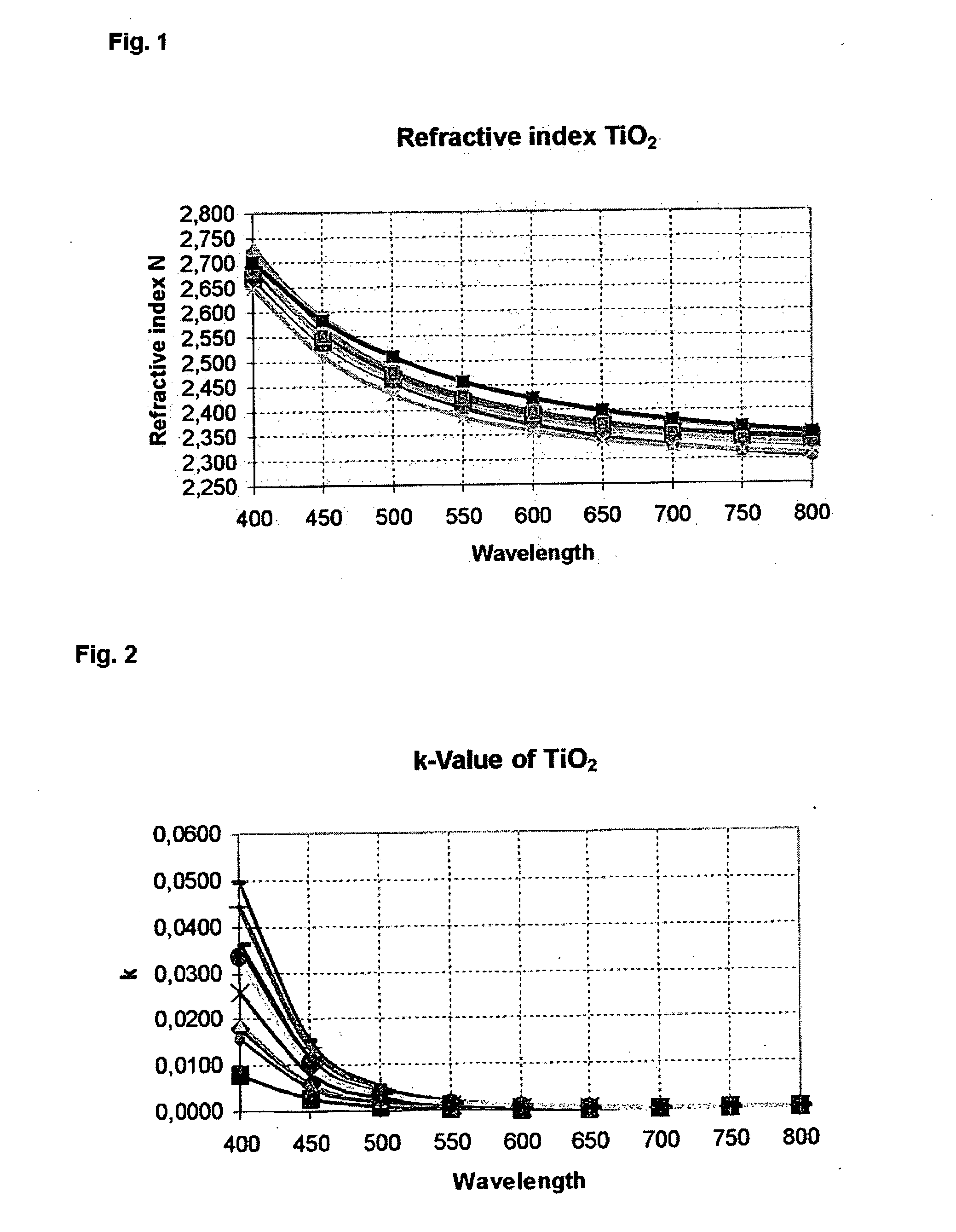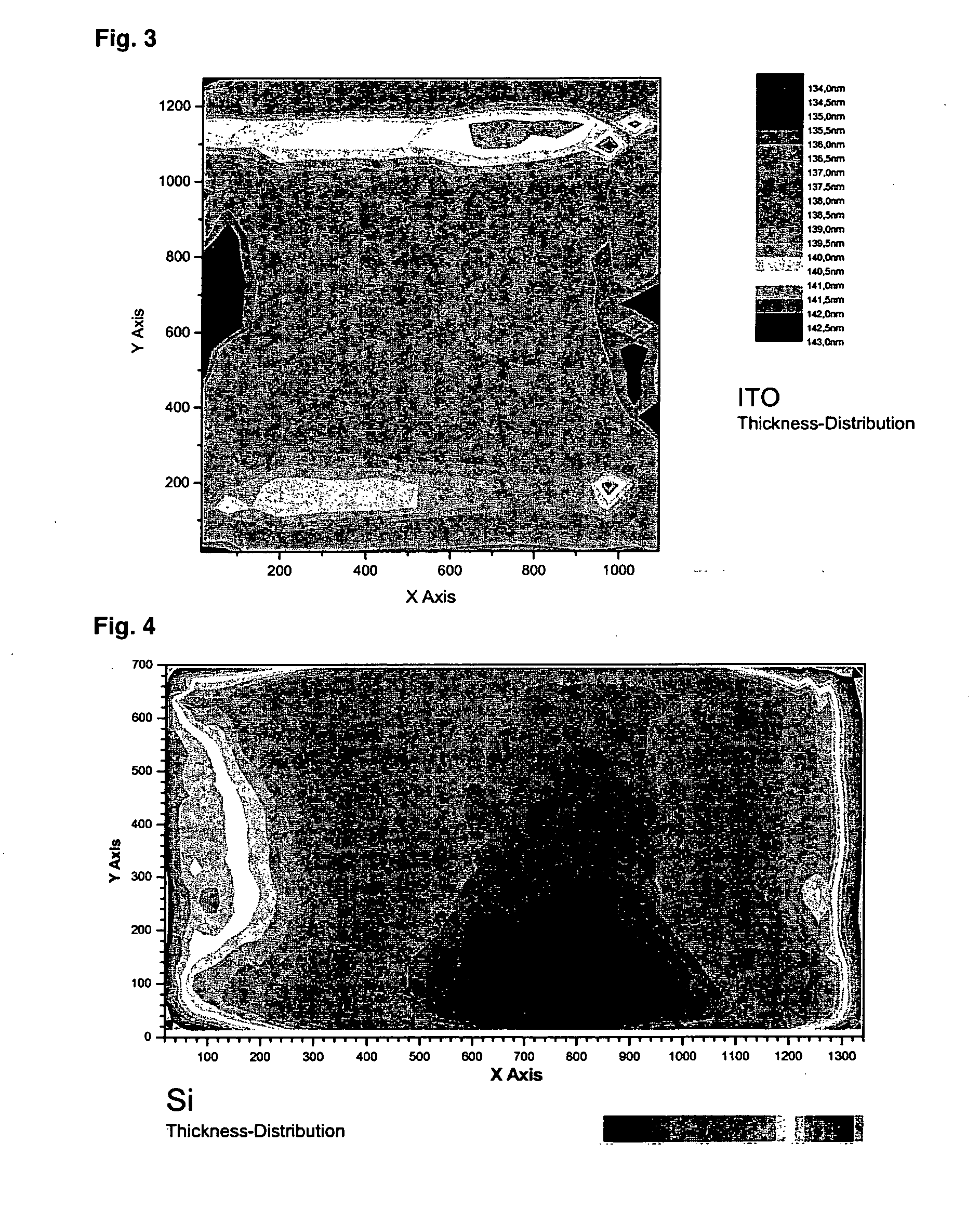Method of determining physical properties of an optical layer or layer system
a technology of optical layer and layer system, applied in the direction of optical radiation measurement, vacuum evaporation coating, instruments, etc., can solve the problem of a considerable amount of time and effort that is not practicabl
- Summary
- Abstract
- Description
- Claims
- Application Information
AI Technical Summary
Benefits of technology
Problems solved by technology
Method used
Image
Examples
Embodiment Construction
[0023]FIG. 1 depicts a diagram that illustrates the refractive index n as a function of the wavelength of the light used for a TiO2 layer. The different curves are recorded for TiO2 layers which were deposited under varying coating conditions with a different oxygen content in the coating atmosphere. It can be gathered from the various curves that the refractive index n, as a function of the coating conditions, is varied by an additive constant, the extent of variation being determined by the prevalent coating conditions in each case.
[0024] In the same way, FIG. 2 depicts the extinction coefficient k for various TiO2 layers as a function of the wavelength of the light used. Here, too, the oxygen-induced variation in extinction coefficient for the variously deposited TiO2 layers can be described by an additive constant at least in the range below a wavelength of 600 nm.
[0025] The variation in both refractive index n and extinction coefficient k, which variation is caused by differe...
PUM
| Property | Measurement | Unit |
|---|---|---|
| Thickness | aaaaa | aaaaa |
| Transmission | aaaaa | aaaaa |
| Surface area | aaaaa | aaaaa |
Abstract
Description
Claims
Application Information
 Login to View More
Login to View More - R&D
- Intellectual Property
- Life Sciences
- Materials
- Tech Scout
- Unparalleled Data Quality
- Higher Quality Content
- 60% Fewer Hallucinations
Browse by: Latest US Patents, China's latest patents, Technical Efficacy Thesaurus, Application Domain, Technology Topic, Popular Technical Reports.
© 2025 PatSnap. All rights reserved.Legal|Privacy policy|Modern Slavery Act Transparency Statement|Sitemap|About US| Contact US: help@patsnap.com



